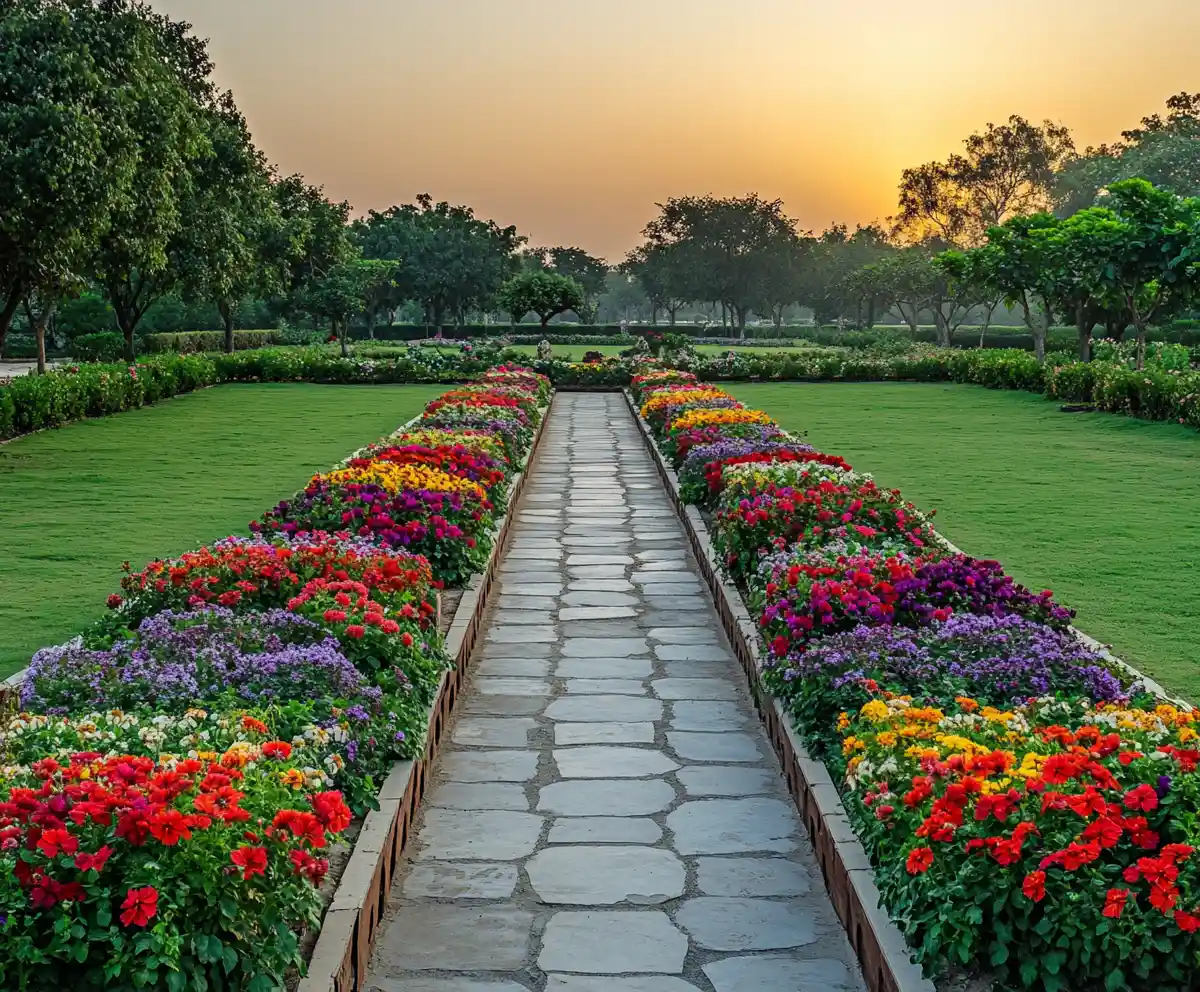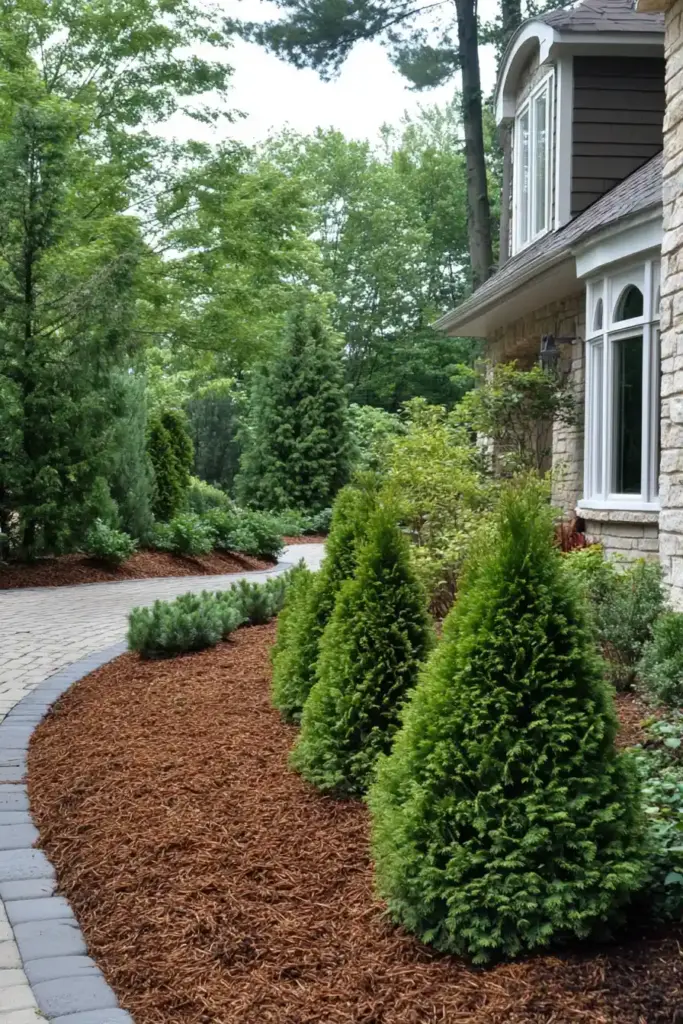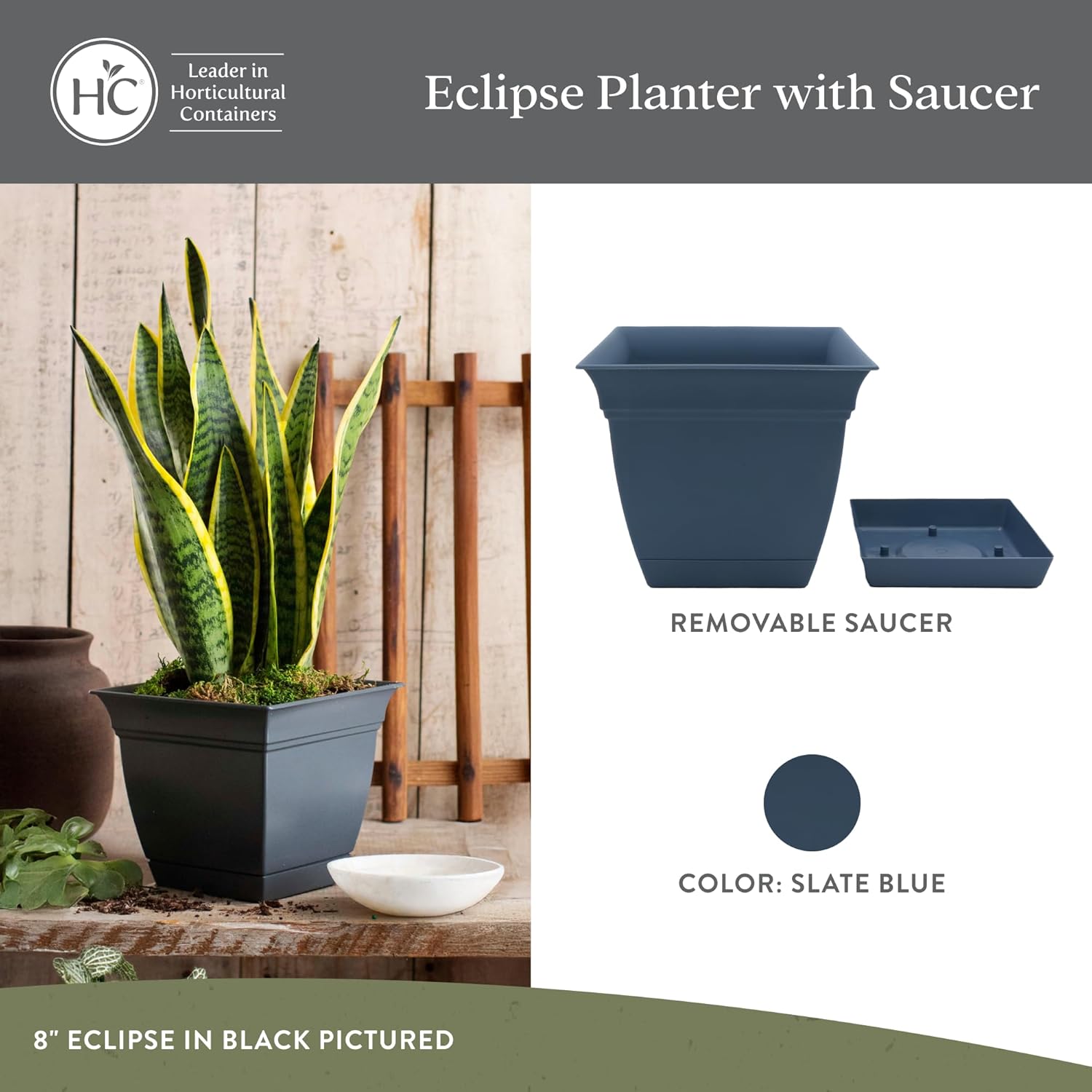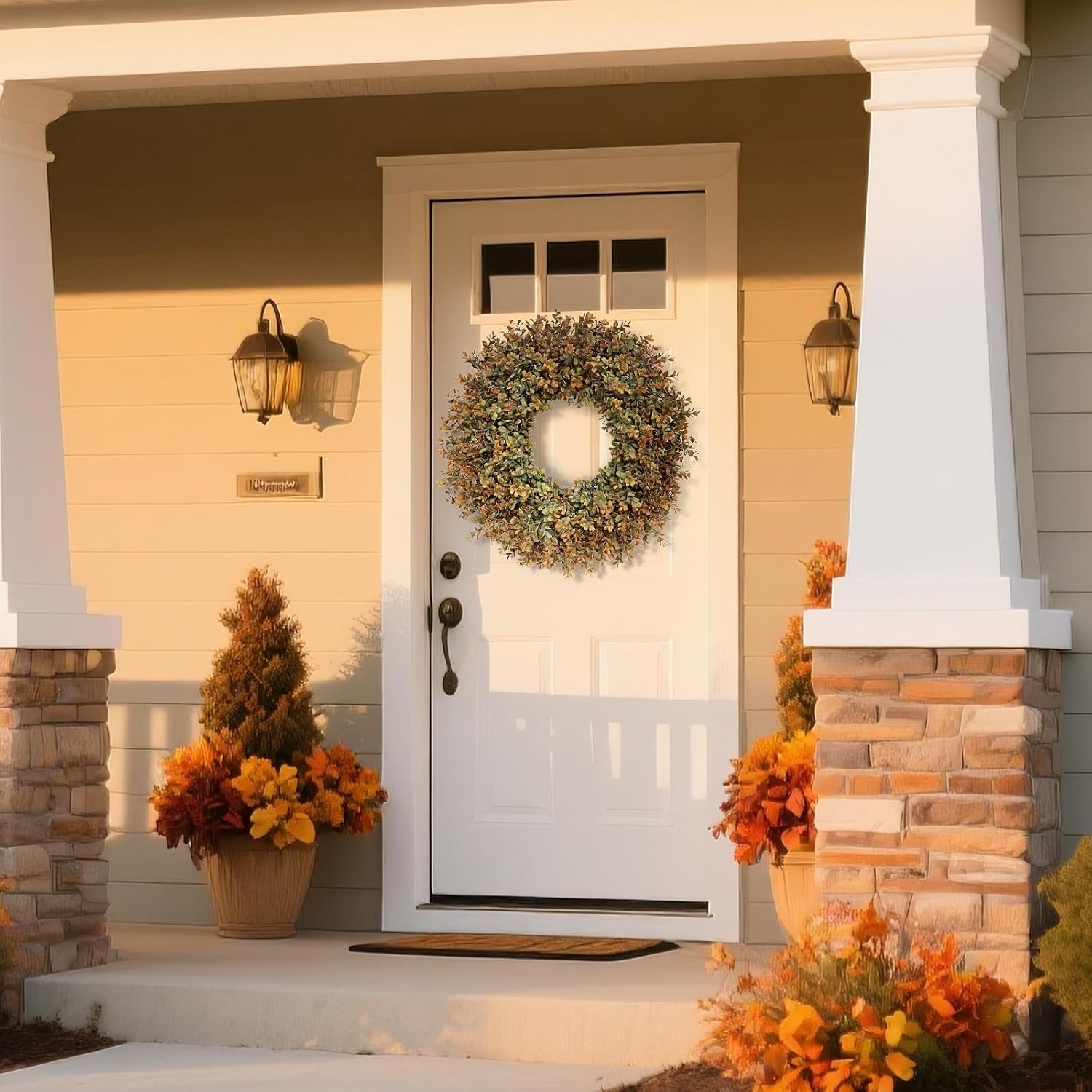1. Neat Tree and Shrub Beds
Cedar mulch landscaping ideas often begin with one of the simplest yet most effective techniques: creating clean, well-defined beds around your trees and shrubs. There’s something incredibly satisfying about the contrast of rich, reddish mulch against the green of leaves and the texture of bark. It gives your landscape a fresh, professional touch without much effort.
To make this pop:
- Outline the bed with natural edging stones or steel borders.
- Spread a 2-3 inch layer of cedar mulch evenly, keeping it a few inches away from the tree trunk or shrub base to prevent rot.
- Consider layering with evergreen ground covers or small flowering plants for seasonal color.
The visual impact of this tidy arrangement sets the tone for the rest of your yard—and makes regular maintenance a breeze.
2. Warm Up Your Garden with Color
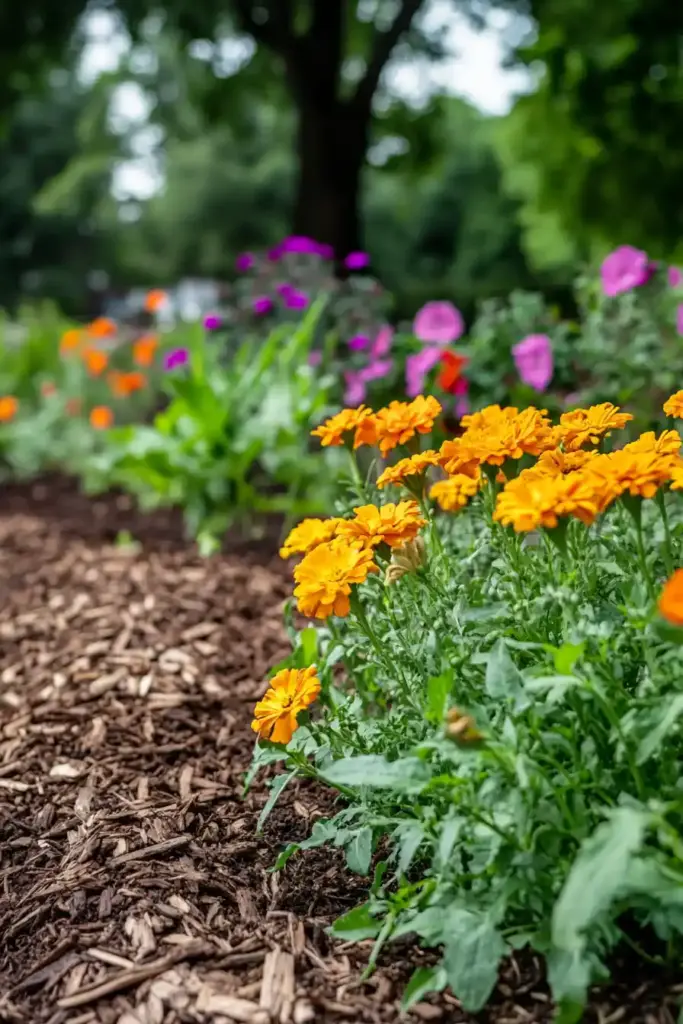
One of the most beautiful aspects of cedar mulch landscaping ideas is how the mulch itself brings warmth to your garden palette. The reddish-brown tones of cedar mulch naturally amplify the colors of flowers, shrubs, and even foliage, making your entire garden feel more inviting and cohesive.
Try this approach to make color the star:
- Use cedar mulch around colorful annuals like zinnias, marigolds, or petunias to enhance their vibrancy.
- Pair it with garden edging in black or natural stone tones for contrast.
- Mix in decorative planters or painted pots to add vertical interest and visual variety.
The warm hue of cedar mulch acts like a natural filter—making every flower seem just a bit more radiant, especially during golden hour. It’s a low-effort, high-reward way to make your garden glow.
3. Decorative Walkways with Stepping Stones
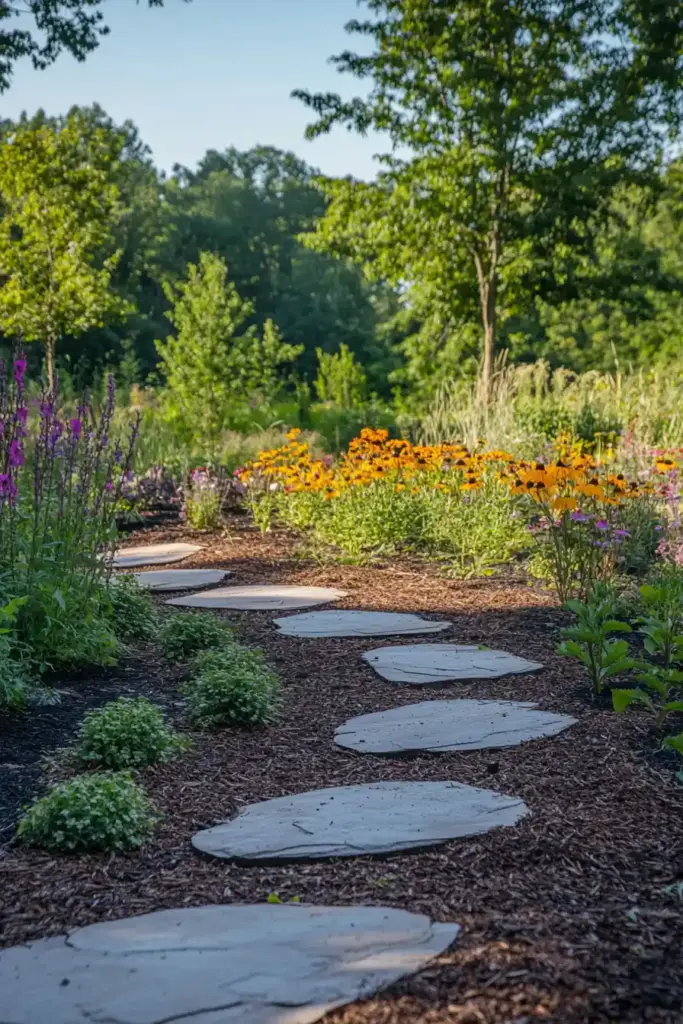
When it comes to cedar mulch landscaping ideas that combine charm and function, creating decorative walkways with stepping stones is a top contender. The soft, aromatic mulch cushions each step, while the stones offer structure and style—together forming a visually stunning path through your garden.
To design an eye-catching walkway:
- Choose natural flagstones, pavers, or rustic stepping stones that contrast nicely with the cedar mulch.
- Lay them in a staggered or symmetrical pattern based on your garden’s vibe—organic or formal.
- Fill in the gaps with cedar mulch to soften the look, prevent weeds, and improve drainage.
This combo not only adds whimsy and elegance to your yard but also makes navigation more practical, especially after rain. It’s like creating a garden path straight out of a fairytale.
4. Mulch a Mailbox Garden Bed
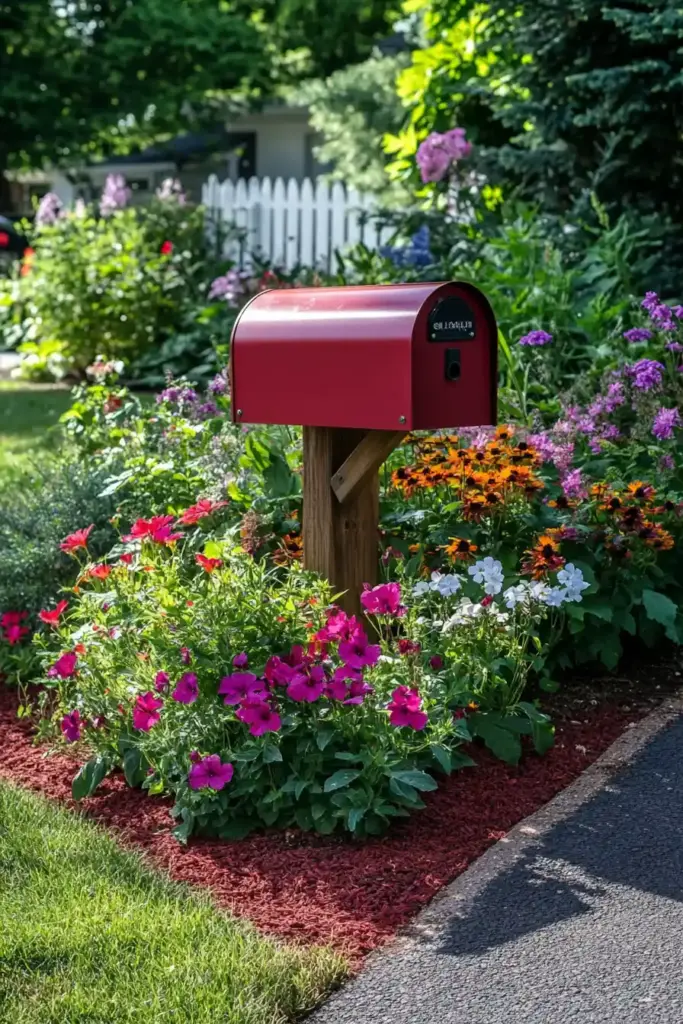
Looking for cedar mulch landscaping ideas that boost curb appeal? One of the most underrated spots to enhance is right at your mailbox. A mulched garden bed around your mailbox adds instant charm and makes a welcoming statement to anyone passing by.
Here’s how to pull it off:
- Define the bed shape with bricks, edging, or even recycled materials for a rustic touch.
- Plant low-maintenance, eye-catching flowers like daylilies, black-eyed Susans, or salvia.
- Spread a generous layer of cedar mulch to suppress weeds, retain moisture, and give it that finished look.
Bonus tip: Add a solar-powered garden light or decorative house numbers to make your setup both stylish and functional. It’s a small area, but with the right touch, it packs a punch.
5. Create Contrast and Texture

If you’re aiming for bold visual appeal, cedar mulch landscaping ideas that focus on contrast and texture are where the magic happens. The rich tones and fibrous nature of cedar mulch naturally play off smoother and brighter elements in your landscape, adding layers of depth and dimension.
To achieve that dynamic look:
- Use cedar mulch beside lush green lawns, gravel paths, or pale-colored stone borders for instant contrast.
- Pair it with plants that have large, glossy leaves or silvery foliage—like hostas or lavender—for extra textural play.
- Add vertical interest with trellises, ornamental grasses, or small garden sculptures.
The goal is to create a visual rhythm that draws the eye across your space—balancing rough with smooth, bold with subtle. Cedar mulch isn’t just functional here—it’s a key design element.
6. Natural Touch to Outdoor Seating Areas
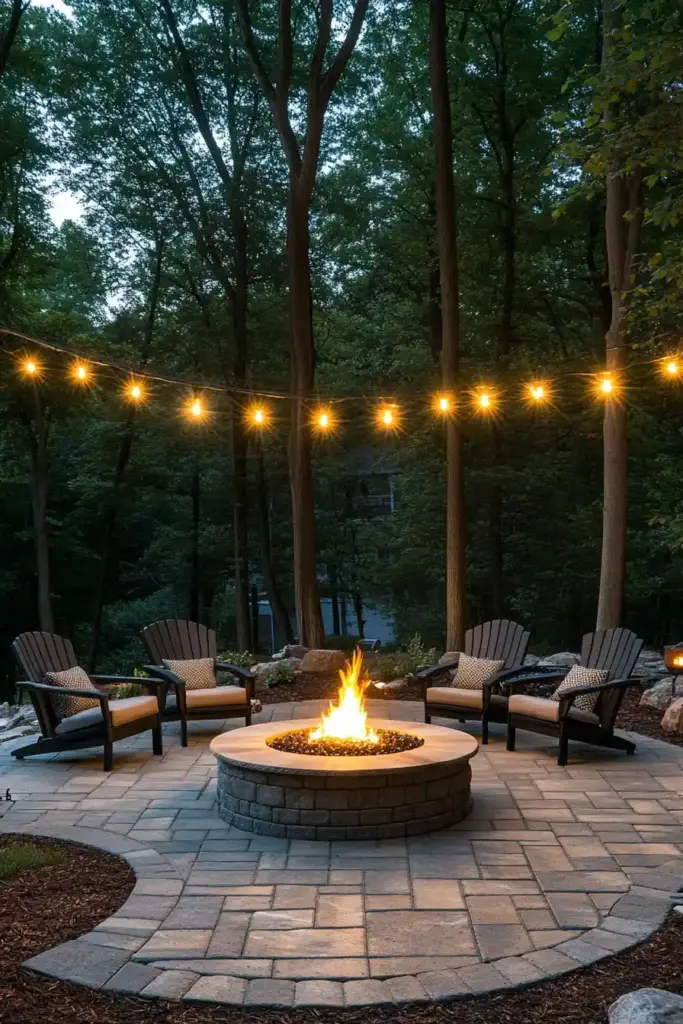
Want your patio or fire pit area to feel more grounded and serene? Adding cedar mulch around your seating zones is one of the coziest cedar mulch landscaping ideas out there. It blends seamlessly with nature while softening the space underfoot—perfect for relaxing outdoors.
To make your seating area shine:
- Spread cedar mulch around Adirondack chairs, benches, or a fire pit to create a defined, natural floor.
- Surround the area with native plants or ornamental grasses for a more organic, laid-back vibe.
- Add solar string lights or lanterns to enhance evening ambiance and draw people in.
The cedar mulch not only enhances aesthetics but also improves drainage and keeps the space mud-free after rain. It’s a practical yet beautiful way to bring comfort and a touch of rustic charm to your outdoor retreat.
7. Mix Materials for Texture
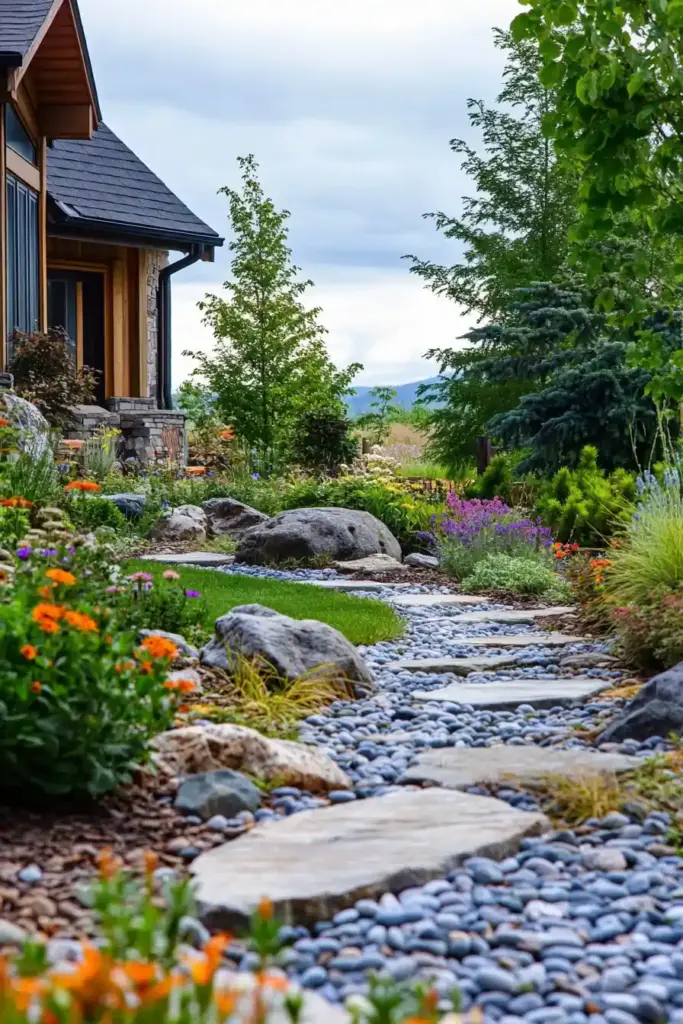
If your landscape is feeling a little flat, one of the most effective cedar mulch landscaping ideas is to mix materials for added texture. Cedar mulch plays well with others—think stone, gravel, wood, or metal—creating a layered look that feels both curated and natural.
Here’s how to get that designer-level texture:
- Use cedar mulch as a soft base layer and integrate larger elements like flagstones, river rocks, or reclaimed wood borders.
- Try alternating materials in specific zones—for example, mulch around plants, stone under seating, and gravel in walkways.
- Incorporate height variation with raised beds or container gardens to add even more visual interest.
This mix-and-match approach brings out the rich color and grain of cedar mulch while making your garden more dynamic. Texture isn’t just a visual trick—it enhances the sensory experience of your outdoor space.
8. Gradient Garden Patterns

One of the more artistic cedar mulch landscaping ideas is to create gradient patterns in your yard using layers of materials. By transitioning from grass to cedar mulch to decorative stones, you can design soft visual flows that mimic natural landscapes—and they’re easier to pull off than you’d think.
To craft an effective gradient:
- Start with a natural border, like lawn or a flower bed, and transition into cedar mulch.
- From the mulch area, slowly integrate pebbles or larger decorative stones, keeping the color palette cohesive.
- Use curved lines and asymmetry to avoid a “blocky” look—nature doesn’t do straight edges.
This technique works especially well in front yards or open spaces where you want to create a visual journey. It’s a subtle yet powerful way to lead the eye and bring cohesion to different landscape elements.
9. Low-Maintenance Garden Design
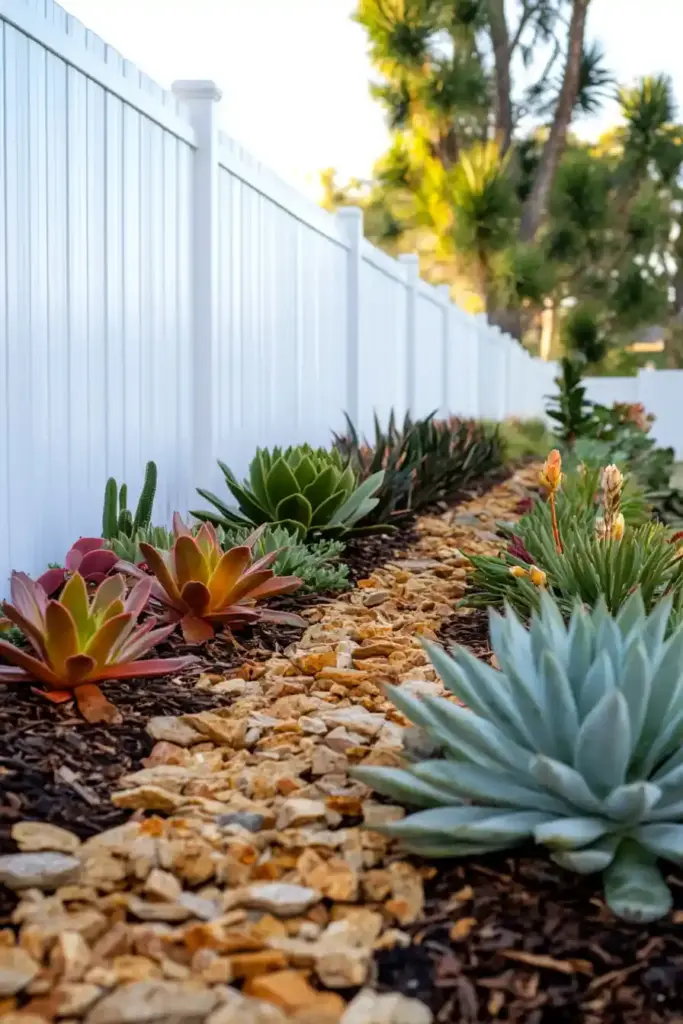
For gardeners who love the look but not the upkeep, cedar mulch landscaping ideas are a game-changer. Cedar mulch helps create beautiful, low-maintenance garden designs by doing a lot of the heavy lifting—suppressing weeds, locking in moisture, and breaking down slowly over time.
Here’s how to build a fuss-free garden:
- Choose drought-tolerant plants like sedum, yarrow, or ornamental grasses to pair with cedar mulch.
- Use landscape fabric under the mulch to further reduce weed growth and minimize maintenance.
- Design simple bed shapes and pathways that are easy to access and maintain, especially near patios or driveways.
With the right setup, you’ll spend less time weeding and watering—and more time enjoying your space. Cedar mulch makes a smart and stylish foundation for any stress-free garden plan.
10. Boost Soil Health
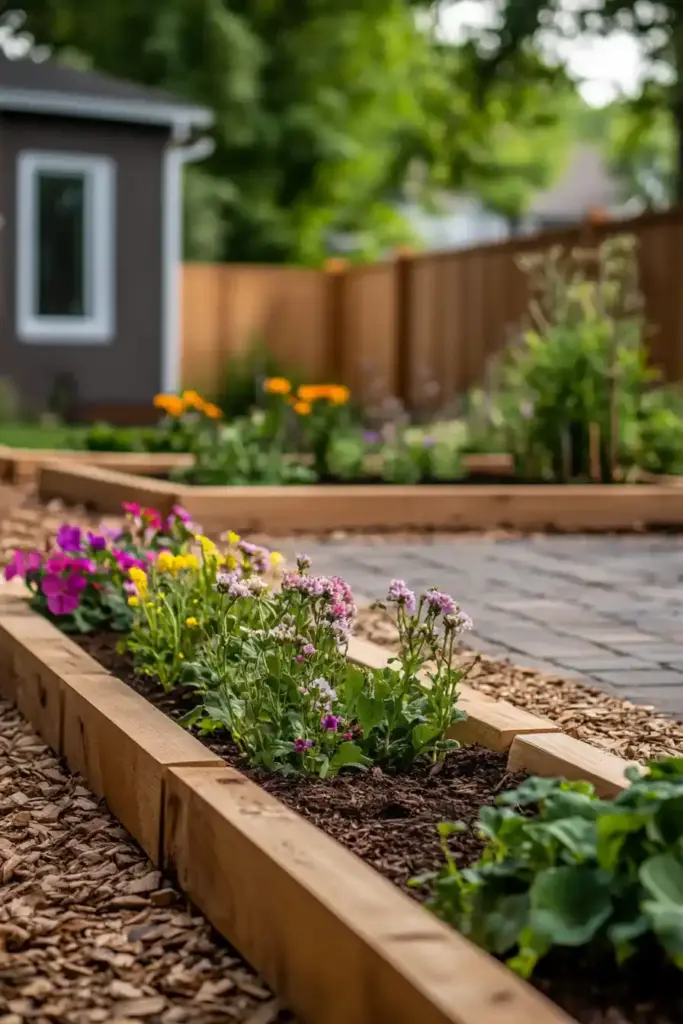
Among the most practical cedar mulch landscaping ideas is using it to naturally boost soil health. Unlike synthetic options, cedar mulch slowly decomposes over time, enriching your soil with organic matter and improving its structure—especially beneficial for flower beds and vegetable gardens.
Here’s how to make the most of it:
- Apply a 2–3 inch layer of cedar mulch around your plants, making sure not to pile it directly against stems or trunks.
- Water the area well after mulching to help it settle and begin its slow breakdown.
- Refresh the mulch annually to maintain both its appearance and its benefits to the soil.
As it breaks down, cedar mulch improves drainage, promotes microbial life, and encourages stronger root systems. It’s a long-term investment in your garden’s health that pays off every season.
11. Rustic Charm with Cabin Vibes
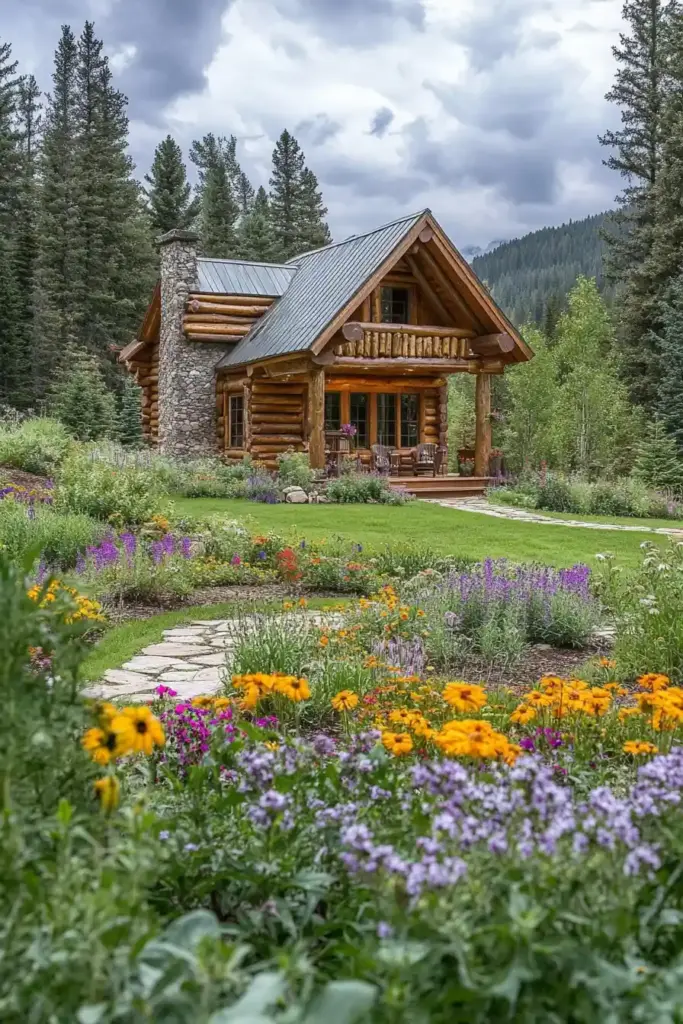
Want to channel that cozy, woodland getaway feeling in your own backyard? Incorporating cedar mulch landscaping ideas into a cabin-style garden is the perfect way to evoke rustic charm. With its natural aroma, rich color, and textured look, cedar mulch blends beautifully with wood, stone, and nature-inspired décor.
Here’s how to nail that rustic aesthetic:
- Use cedar mulch around log-style planters, wooden benches, or reclaimed lumber pathways to enhance the organic vibe.
- Pair it with wildflowers, ferns, or native shrubs that feel like they belong in a forest clearing.
- Add warm lighting like lanterns or solar-powered path lights to make the space feel inviting after dark.
Cedar mulch doesn’t just look the part—it smells like the woods and helps tie together all the elements of a nature-inspired retreat, whether you’re by a real cabin or just dreaming of one.
12. Control Erosion on Slopes
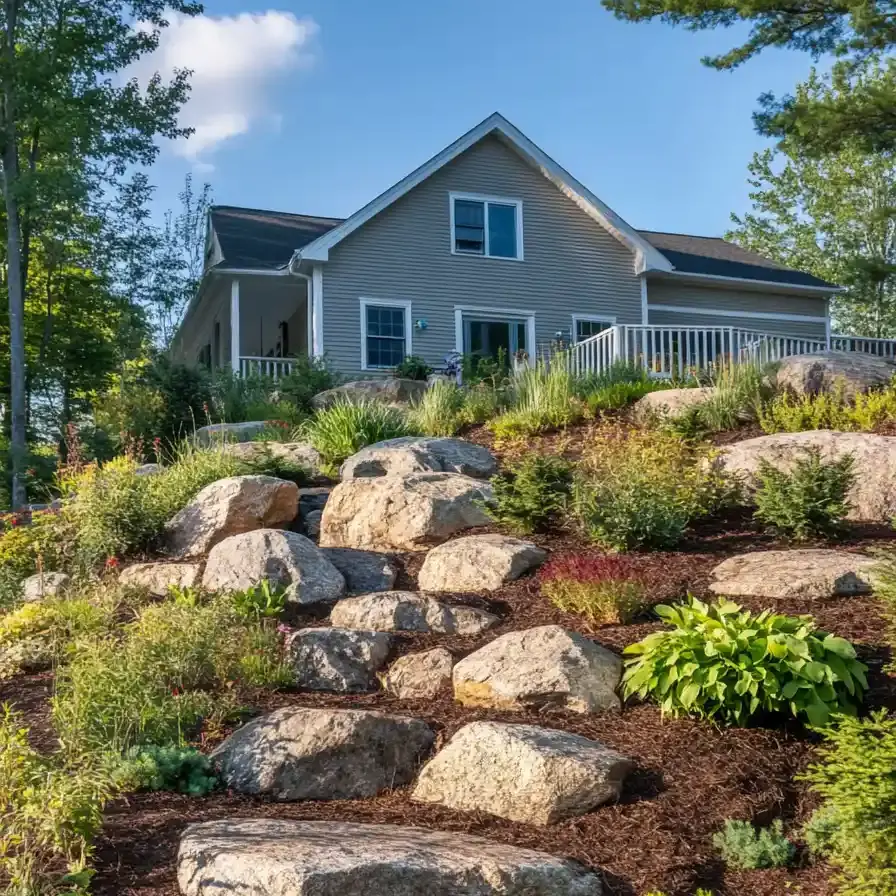
If your yard has slopes or uneven terrain, cedar mulch isn’t just a pretty face—it’s a functional solution. One of the smartest cedar mulch landscaping ideas is using it to control soil erosion. Its fibrous texture helps lock everything in place, preventing runoff while still looking natural and tidy.
Here’s how to put it to work:
- Before applying mulch, consider laying down landscape fabric to add an extra layer of erosion protection.
- Spread a thick layer (3–4 inches) of cedar mulch on sloped areas to weigh down the soil and reduce water runoff.
- Use garden edging or rocks at the base of the slope to help contain the mulch during heavy rain.
This method not only stabilizes the soil but also enhances the slope’s visual appeal—no more muddy mess, just clean, cohesive landscaping with long-term benefits.
13. Natural Bug Repellent
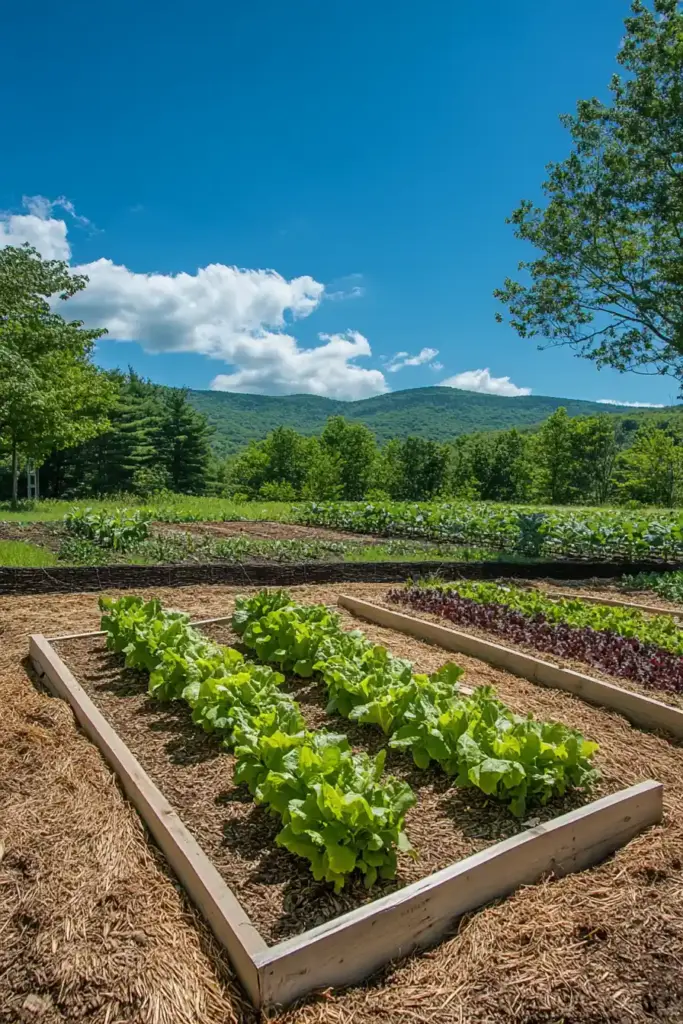
Looking for cedar mulch landscaping ideas that go beyond beauty? Here’s a bonus: cedar mulch naturally repels insects. Its aromatic oils act as a deterrent for pests like ants, ticks, and even some types of beetles—making it an eco-friendly way to protect your garden without chemicals.
Here’s how to take advantage of this natural bug barrier:
- Use cedar mulch around outdoor seating areas, patios, or garden beds to create a pest-resistant zone.
- Apply it in high-traffic spaces where kids and pets play—it’s a safer alternative to synthetic repellents.
- Combine with pest-resistant plants like lavender, rosemary, or marigolds for a double layer of defense.
With cedar mulch, you’re not just improving your garden’s look—you’re creating a healthier, more enjoyable outdoor environment for you and your family.
14. Inexpensive Drainage Solution
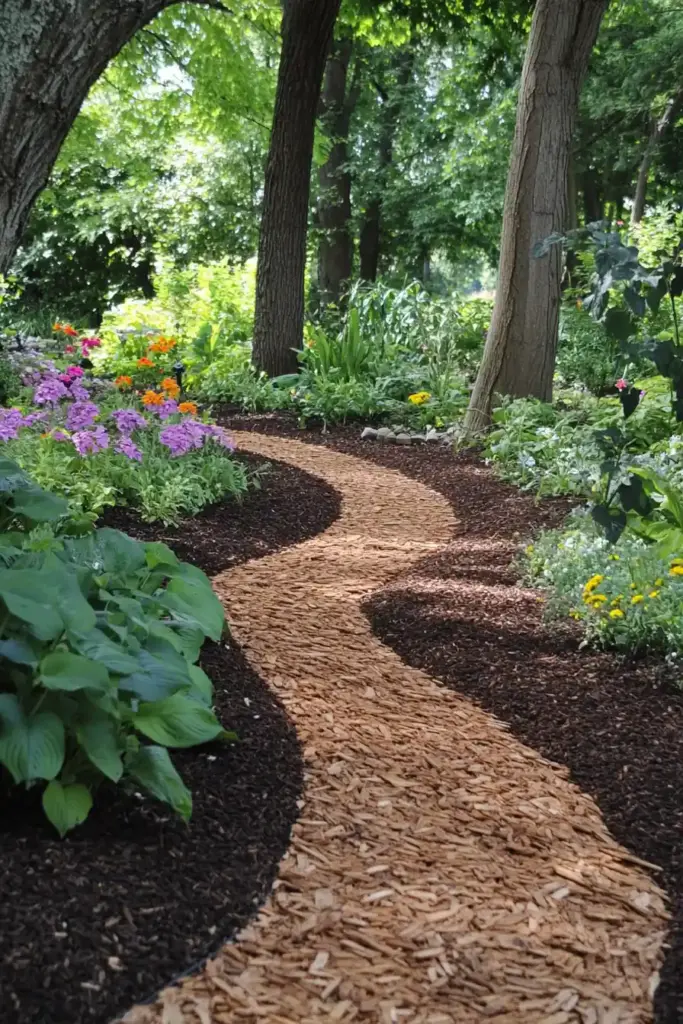
Struggling with soggy spots or water pooling after rain? One of the most budget-friendly cedar mulch landscaping ideas is using it to improve drainage. Cedar mulch allows water to filter through while preventing soil compaction, making it ideal for areas that tend to get muddy or oversaturated.
Here’s how to use it effectively:
- Identify low spots or pathways where water tends to collect and apply a 2–3 inch layer of cedar mulch.
- For even better results, lay down landscaping fabric underneath the mulch to keep soil in place while allowing water to drain through.
- Combine with gravel or river rocks in especially problematic areas to create a layered drainage system that still looks polished.
It’s a cost-effective solution that doesn’t just solve a problem—it enhances the overall aesthetic and usability of your landscape.
15. Add Elegance to Pathway Edges
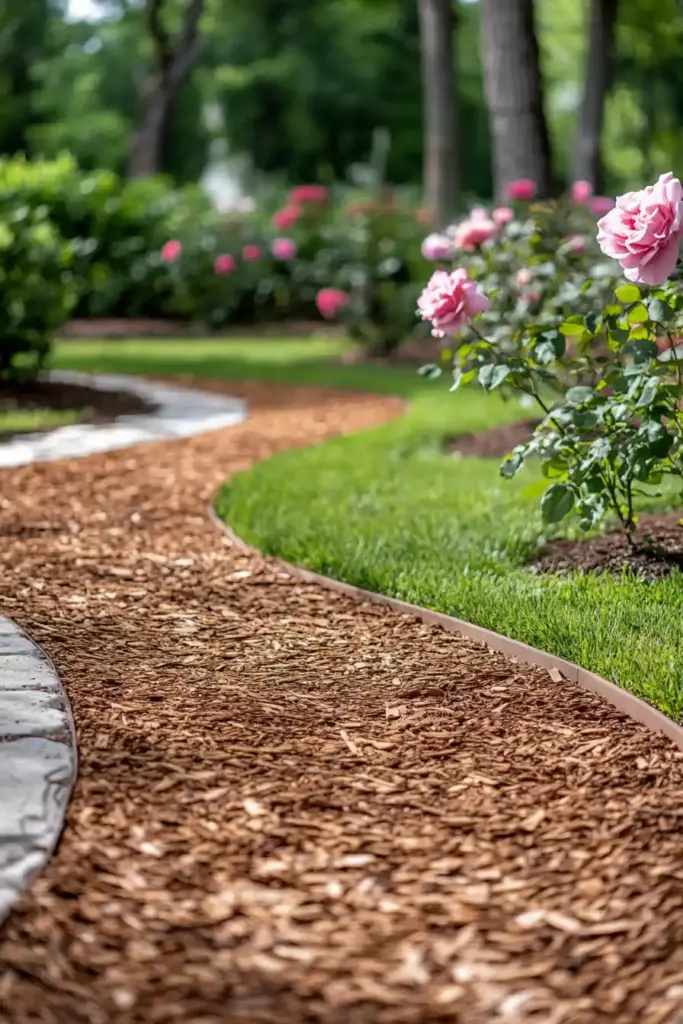
Sometimes, it’s the smallest details that make the biggest impact—and edging your paths with cedar mulch is one of those subtle yet striking cedar mulch landscaping ideas. By lining garden walkways with a neat border of mulch, you create a soft, elegant frame that instantly elevates your landscape’s style.
Here’s how to make it work:
- Lay a thin strip of cedar mulch along both sides of your pathway, whether it’s stone, brick, or gravel.
- Define the edge with metal or stone edging for a clean, professional look.
- Add pathway lights to highlight the cedar mulch border and make evening strolls extra magical.
This simple design trick softens hardscape materials and blends your pathways seamlessly into surrounding garden beds, tying everything together with a natural, polished finish.
16. Enhance Your Plant Beds
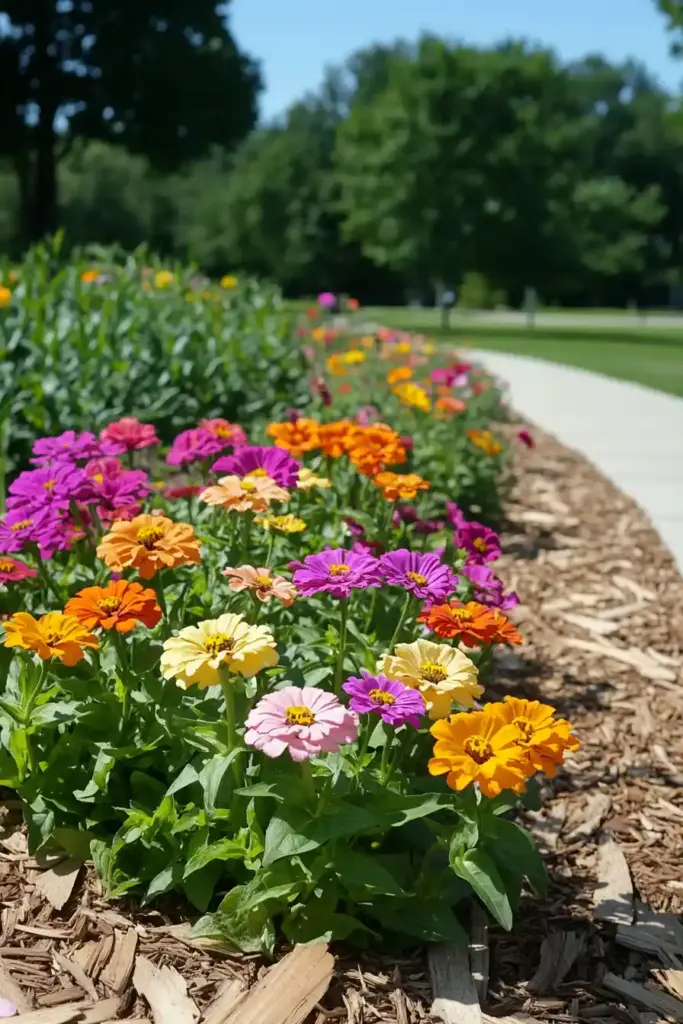
When it comes to bringing out the best in your flowers and foliage, few cedar mulch landscaping ideas are as impactful as using it to top off your plant beds. Cedar mulch acts like a protective blanket—locking in moisture, reducing weeds, and making your beds look instantly finished and lush.
Here’s how to upgrade your beds:
- Apply a 2–3 inch layer of cedar mulch around your plants, keeping a few inches of space around stems to prevent rot.
- Use edging to separate beds from lawn or paths for a crisp, defined appearance.
- Refresh the mulch each season to maintain color and effectiveness, especially in high-traffic areas.
Beyond just looks, this method helps create a healthier growing environment for your plants, improving their resilience through heat, drought, and cold snaps alike. It’s like giving your garden a spa day—every day.
17. Define Your Garden Borders
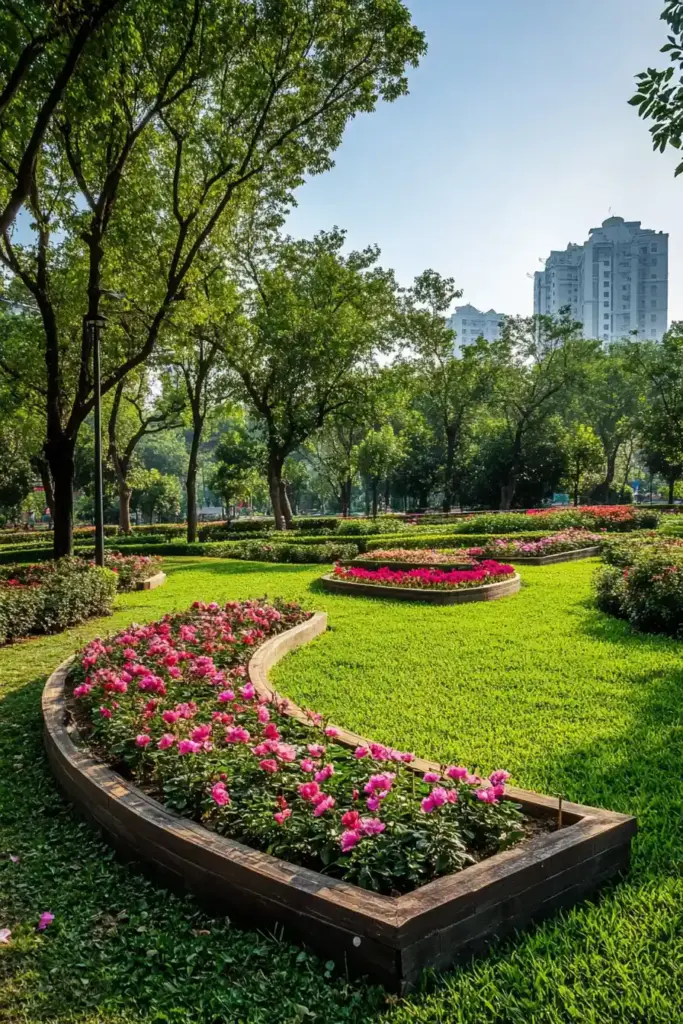
A clean border can make the difference between a garden that feels thrown together and one that looks masterfully designed. One of the most effective cedar mulch landscaping ideas is using it to define garden edges and borders. The contrast between cedar mulch and lawn or paths gives your space crisp lines and a cohesive flow.
To create bold, tidy borders:
- Use cedar mulch along the edges of flower beds, walkways, or tree rings to visually separate garden zones.
- Install edging materials like steel, brick, or plastic to keep the mulch in place and prevent spillage into grass or gravel.
- Pair with evergreen shrubs or ornamental grasses for a structured, low-maintenance look that lasts all year.
Defined borders not only look sharp—they also make mowing and garden upkeep easier. It’s a small detail with big visual payoff.
🌿 Conclusion: Bring Your Landscape to Life with Cedar Mulch
Cedar mulch isn’t just a finishing touch—it’s a powerful, versatile element that elevates the look, health, and function of your outdoor space. Whether you’re aiming for rustic cabin charm, clean modern edges, or a colorful flower haven, these cedar mulch landscaping ideas offer inspiration for every style and skill level.
From defining borders to improving soil health and repelling pests naturally, cedar mulch delivers both beauty and practical benefits. With a little planning and creativity, you can transform ordinary spaces into standout garden features—all while keeping maintenance low and impact high.
🌿 Love gardening inspiration? Follow me on Pinterest for bold plant ideas, tips, and seasonal color!
More Posts
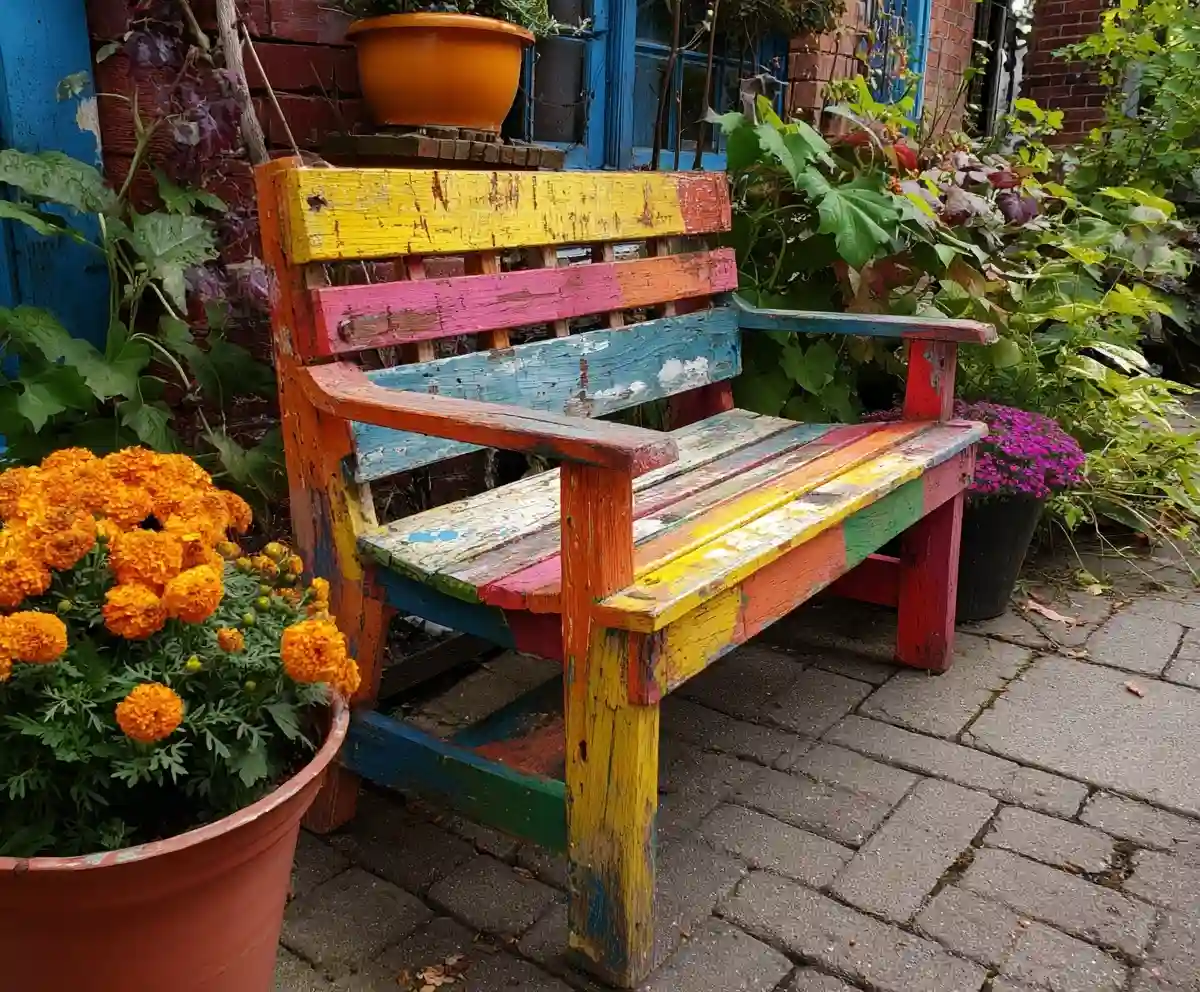
19+ Budget-Friendly Backyard Makeover Ideas
Backyard makeover ideas can turn even the most ordinary outdoor space into a warm, inviting retreat—without draining your wallet.
Read More →
21 Stunning & Simple DIY Clematis Trellis Designs
DIY clematis trellis designs are a beautiful way to blend creativity with function in your garden.
Read More →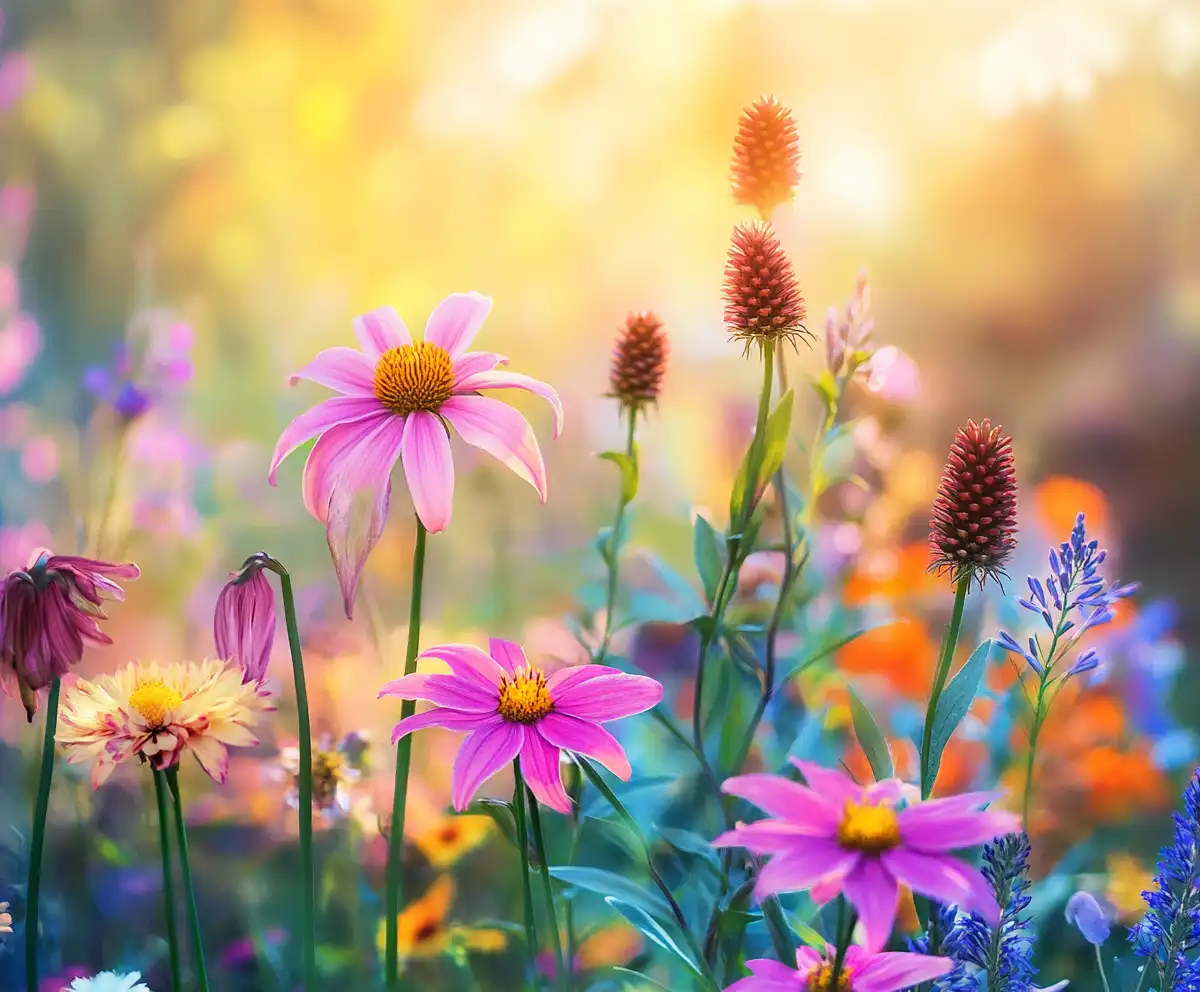
12 Full Sun Perennials That Bloom All Summer
Explore a selection of hardy perennials that flourish and bloom beautifully in full sun throughout the summer.
Read More →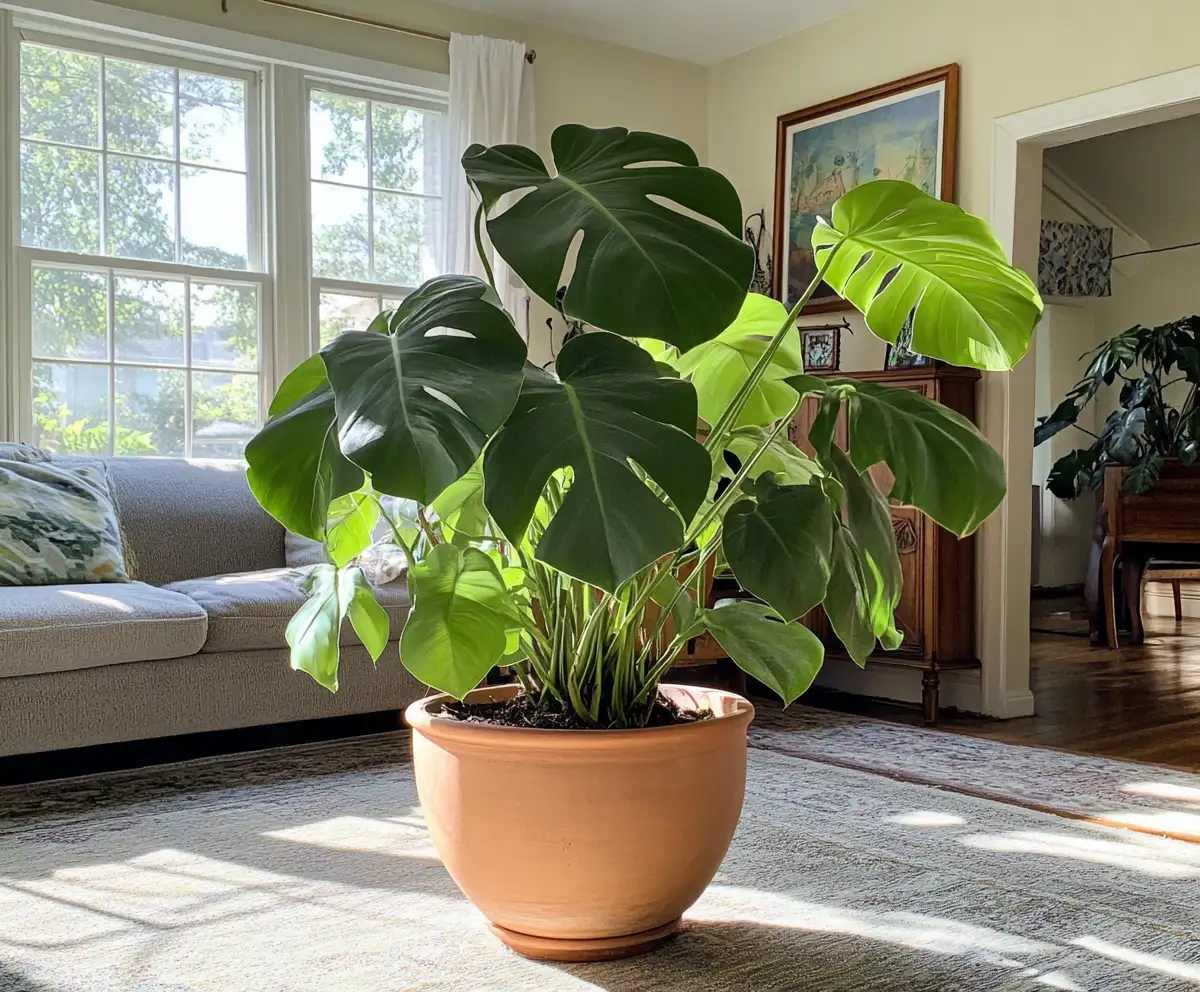
Houseplants for Living Room
Find the perfect houseplants to brighten and purify your living room while adding a touch of nature indoors.
Read More →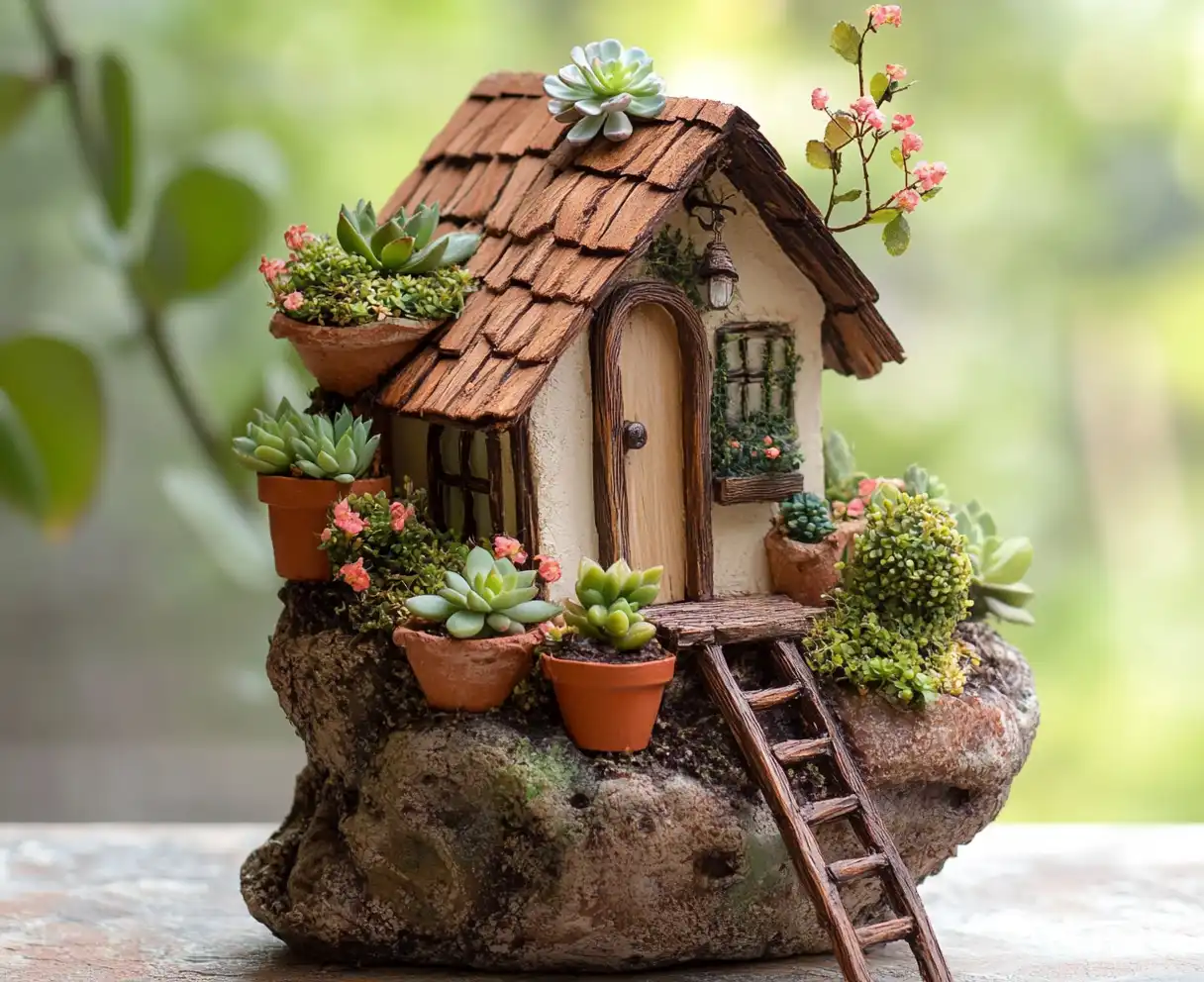
Backyard Play Area for Kids
Create a fun and safe backyard play area for kids with these inspiring design ideas and tips.
Read More →
Top Privacy Trees
Discover top tree varieties that provide natural privacy and enhance your outdoor space.
Read More →

